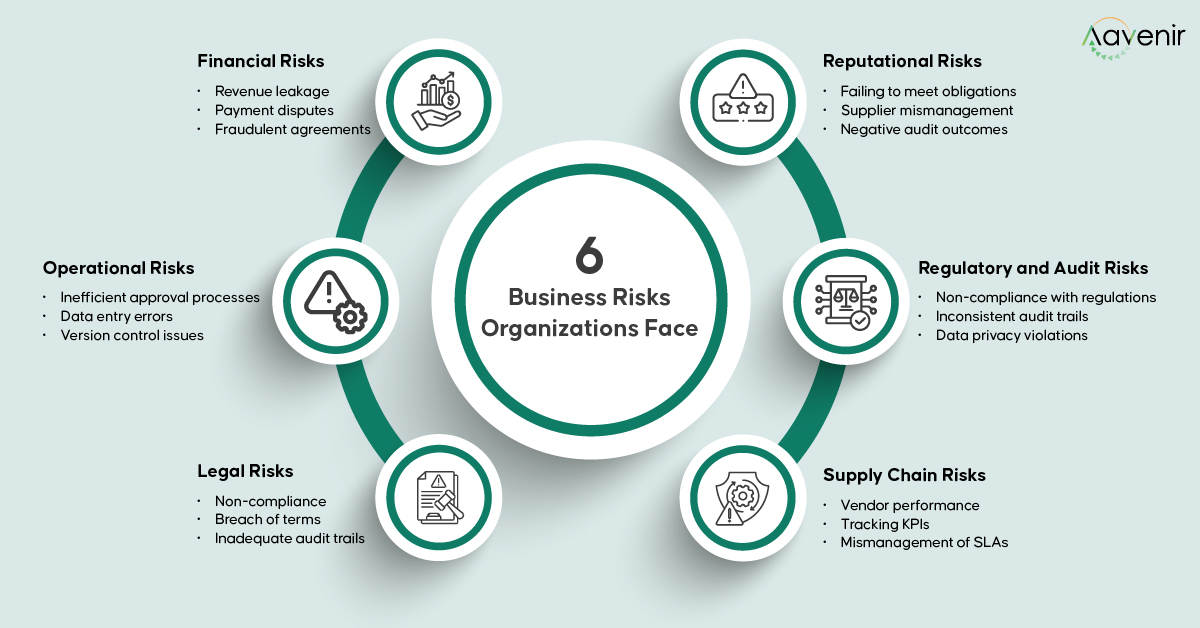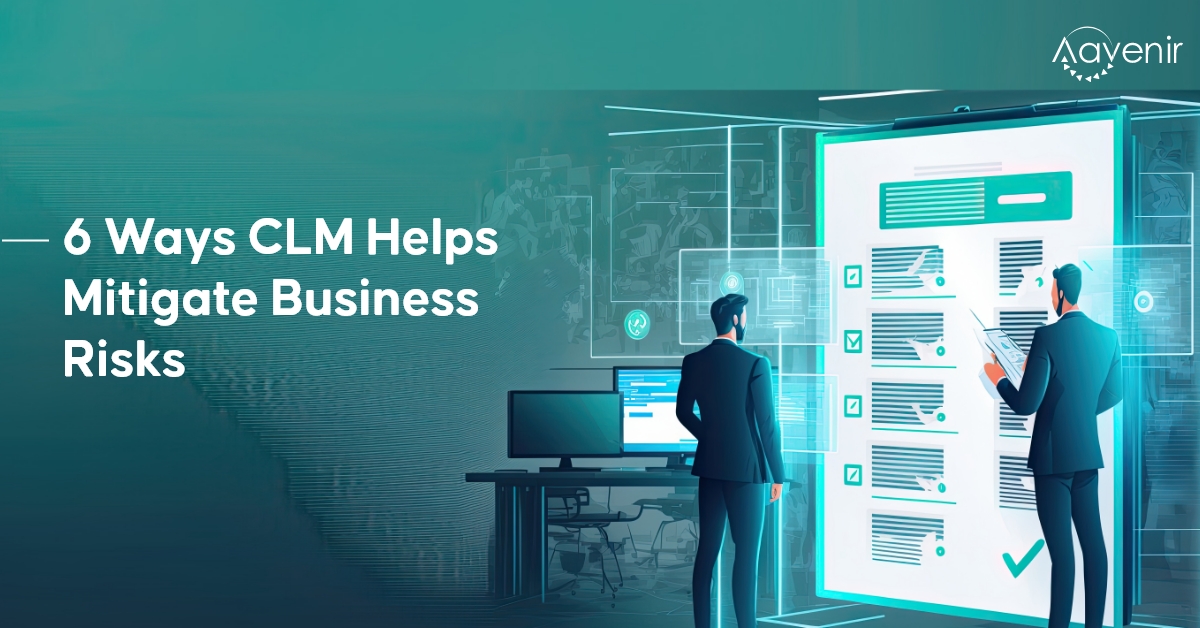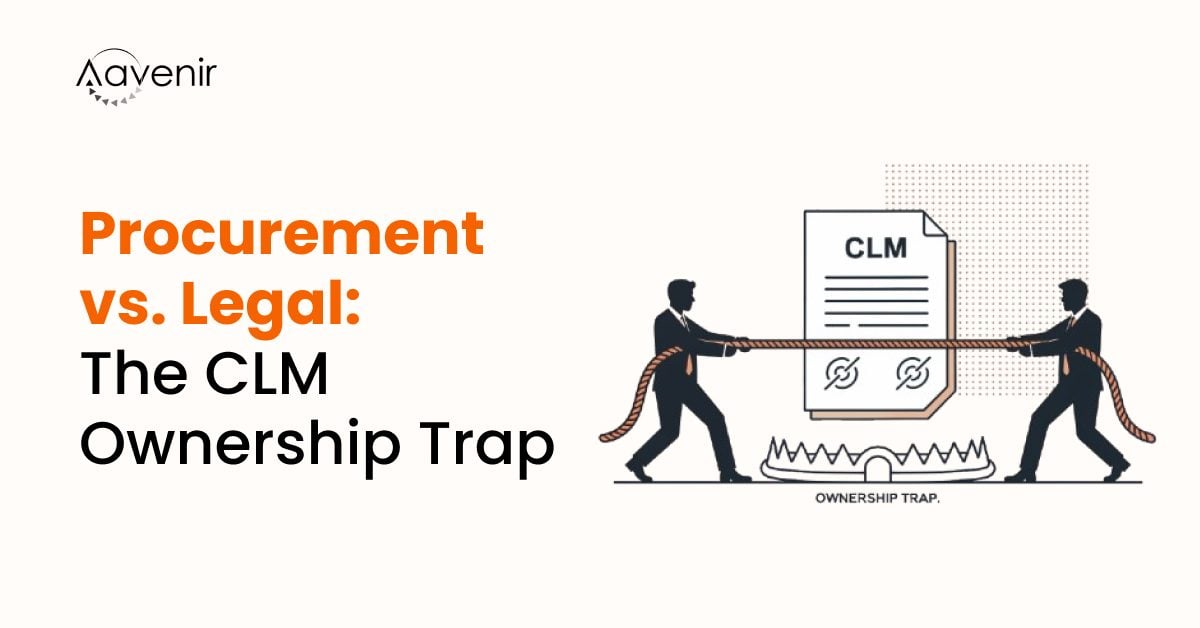Business risks associated with contract or agreement handling stem from non-compliance or breach of terms. This results in missed obligations, poor contract execution, and violation of relevant regulations.
When inadequately addressed, these risks lead to legal disputes, loss of stakeholder confidence, and damaged third-party relationships.
At the same time, these risks come naturally with the contract management process, especially in enterprises and growing businesses. The complexity of creating and executing deals with various parties increases with the scale of business, making the workflow unsustainable and error prone.
Fortunately, it is a solvable problem with a contract lifecycle management (CLM) solution. These tools help businesses efficiently navigate different risks.
In this article, we will explore six kinds of business risks related to contract management and understand how CLM can help mitigate risks across financial, operational, legal, reputational, regulatory, and supply chain domains.
6 Types of Business Risks and How CLM Helps Mitigate Them
Managing contracts alongside multiple stakeholders can increase the likelihood of different risks, such as operational inefficiencies and compliance oversights. These risks can escalate minor issues when unmanaged, affecting overall business performance.

1. Financial Risks
Financial risk refers to the possibility that a company will experience financial losses due to market fluctuations, credit issues, liquidity constraints, or operational failures. This risk can adversely affect a company’s earnings, capital, or financial stability.
The four key types of financial risks associated with contract management for businesses include:
- Revenue Leakage: Contracts without proper monitoring may lead to missed billing opportunities or overlooked price escalations, directly impacting revenue.
- Contract Breaches: Failure to meet contractual obligations or mismanagement of contract terms can result in costly penalties and legal disputes.
- Payment Disputes: Misaligned payment terms or unclear documentation can cause delays and conflicts, straining client and partner relationships.
- Fraudulent Agreements: Without a centralized system, fraudulent contracts or unauthorized amendments can go unnoticed, resulting in financial losses.
CLM can help navigate the above risks by:
- Building a centralized contract repository: When all the financial terms and agreements are easily accessible, crucial details won’t be missed, reducing the chances of revenue leakage and compliance breaches.
- Sending real-time alerts to stakeholders: Teams will constantly be updated about payment schedules, renewals, and other deadlines. These reminders help prevent missed payments, resolve disputes, and avoid penalties.
- Analyzing contracts throughout the lifecycle: Continuous monitoring helps track each minor change and identify errors that can cause bottlenecks down the line. Businesses can also discover concerning patterns and iterate their overall workflow.
- Clause monitoring: Contract lifecycle management solutions often support revenue assurance by automating billing and ensuring correct pricing through clause monitoring.
Companies across industries are already leveraging CLM software to reap these benefits. For example, a global manufacturing firm recovered $1.2 million in missed rebates within a year by tracking price escalation clauses in supply contracts, and a leading insurance company saved $2 million in uncollected late payment penalties by monitoring payment schedules and contract renewal dates with CLM.
2. Operational Risks
Operational risks affect the day-to-day action items and their deliverables. The key operational risks with contract management are:
- Inefficient Approval Processes: Manual approval workflows can cause delays, leading to missed business opportunities and operational bottlenecks.
- Data Entry Errors: Inconsistent or incorrect data entry can result in flawed contracts, which can lead to compliance issues and financial consequences.
- Version Control Issues: Without proper version tracking, stakeholders may work on outdated contract versions, causing confusion and errors.
- Siloed Contract Handling: When contracts are managed in separate departments without collaboration workflow, it may lead to miscommunication across the organization.
- Stakeholder Miscommunication: Disjointed communication channels often result in misunderstandings, missed deadlines, and disrupted workflows.
- Loss of Critical Data: Without a unified system, important contract information can be lost in chaos, leading to compliance breaches and legal vulnerabilities.
The above risks may lead to improper contract execution. Teams may often make mistakes in delivering products or services while working with different stakeholders, which can later lead to disputes, conflicts, and lawsuits.
Contract lifecycle management systems often incorporate workflow management, ensuring contracts progress through each stage with fewer delays. Automation of recurring tasks is key for accuracy and speed in contract management. CLM can shield businesses from this misfortune by:
- Automating essential but repetitive action items: Administrative tasks like manual data entry or sending follow-up emails can be offloaded to CLM solutions. Modern options include AI-powered features that make this even easier.
- Democratizing data through a single source of truth: Teams can eliminate data silos to collaborate effectively on tasks. It will also enable company-wide transparency on procedures and information.
To put it simply, teams will have more time for tactical action items, such as improving stakeholder relationships while having access to everything they need.
3. Legal Risks
Legal risks translate to lawsuits. If stakeholders, like vendors, suppliers, and clients, believe there is a breach of contract, they may take it to court. Teams need to look for the following causes of the legal risks:
- Non-Compliance: Failure to adhere to legal regulations or industry standards can result in penalties, legal actions, and reputational damage.
- Breach of Terms: Mismanagement of contract terms and obligations may lead to violations, inviting lawsuits, or heavy financial penalties.
- Unauthorized Contract Changes: When contracts are altered without proper authorization, it creates legal vulnerabilities and potential disputes.
- Inadequate Audit Trails: Without detailed tracking, it becomes challenging to demonstrate compliance or resolve disputes effectively, exposing businesses to legal risks.
- Disputes Due to Unclear Language: Ambiguous or inconsistent language in contracts can lead to differing interpretations, causing conflicts and lengthy legal battles.
The worst thing about legal risks is that it will quickly lead to other issues. Other stakeholders, for instance, will start looking for different partners and there could be reputational damage as well.
Businesses can protect themselves with CLM software by:
- Performing automated compliance checks: The CLM solutions can examine the contract details and flag concerning sections for additional reviews. This will also save teams a lot of time and effort.
- Standardizing contract clauses: Companies can leverage pre-approved templates, clauses, and forms that promote organization-wide consistency in legal procedures. This eliminates ambiguities while crafting and executing contracts.
- Auditing trails for better transparency: Teams can retrace their steps whenever required to answer specific queries of various third parties. It will also help teams remain compliant and resolve disputes quickly.
4. Reputational Risks
Reputation is everything, considering how easily information can be accessed via the internet. While managing contracts, the following challenges increase the likelihood of reputational damage:
- Failing to meet obligations: Skipping oversteps in the contract management process can result in legal action, financial penalties, and, most critically, damage to the company’s reputation.
- Violations Becoming Public: Breaches of terms or regulatory standards that are publicly exposed can harm a company’s credibility and customer trust.
- Vendor and Supplier Mismanagement: Mismanagement of vendor and supplier contracts may lead to disputes or disruptions in supply chains, impacting client relationships and public perception.
- Negative Audit Outcomes: Failing audits due to poor contract management can result in regulatory fines and bad publicity, further damaging the company’s reputation.
The most significant difficulty with dealing with a damaged reputation is that it requires a lot of resources to fix. In extreme scenarios, businesses are not uncommon to entirely rebrand themselves.
CLM solutions help businesses proactively identify and fix the reputational risks by:
- Meeting contractual obligations: Teams can use these tools to create and share standardized checklists. These checklists, along with the reminders, make it easier to adhere to deadlines and execute the contract thoroughly.
- Version control: Each document in a contract undergoes various rounds of edits. CLM software snapshots them after each edit. It simplifies progress tracking and makes auditing smoother.
A logistics company was in the news as it faced negative media attention after a contract dispute with its client, a leading company. However, by tracking obligations with CLM, they decreased the chances of dispute significantly. This strategic approach enabled them to rebuild client trust.
5. Regulatory and Audit Risks
Regulatory frameworks like GDPR (General Data Protection Regulation), HIPAA (Health Insurance Portability and Accountability Act), and SOX (Sarbanes-Oxley Act) are complex and continuously evolving.
Failing to keep up with will lead to:
- Non-compliance with Regulations: Contracts that do not meet legal standards can result in substantial fines, legal action, and damage to a company’s reputation. As regulations evolve, keeping contracts up-to-date becomes challenging.
- Inconsistent Audit Trails: Without clear records of contract activities, demonstrating compliance during audits becomes difficult, increasing the risk of adverse audit outcomes and penalties.
- Data Privacy Violations: Regulations like GDPR and HIPAA impose strict rules on data handling. Contracts not aligned with these regulations can lead to data breaches, putting businesses at risk of hefty fines and legal issues.
- Inconsistent Contract Language: Varying contract clauses and terms can lead to compliance discrepancies across jurisdictions, making maintaining a unified regulatory stance difficult.
Affected contracts can soak up the team’s time and effort to reestablish legal compliance. Teams can prevent this loss by leveraging a CLM to:
- Perform automated regulatory checks: Both the contract and the workflow around it can be periodically evaluated. Proactive management decreases the likelihood of oversights while crafting legal documents.
- Maintain comprehensive logs of all contract-related activities: This is particularly beneficial for cross-functional teams as they can become more transparent and accountable.
- Use approved and compliant language: CLM can consistently help teams flag discrepancies across contract documents. This will help develop a standardized legal framework for contract handling.
Consequently, businesses can remain stress-free about the legal compliance of their contracts with various third parties.
6. Supply Chain Risks
Supply chain risks with contract management lead to roadblocks in delivering goods and providing services. The key challenges that lead to logistical disruptions include:
- Monitoring of Vendor Performance: It is crucial to monitor vendor reliability and adherence to contract terms. Poor vendor performance can lead to delivery delays, quality issues, and disruptions.
- Tracking KPIs: Key Performance Indicators (KPIs) are vital to measure supplier effectiveness. Inconsistent tracking can result in overlooked underperformance and missed improvement opportunities.
- Obligations: Failing to monitor vendor obligations, such as delivery timelines or compliance requirements, can disrupt supply chains and lead to penalties or legal issues.
- Mismanagement of SLAs: Mismanagement of Service-Level Agreements (SLAs) may result in unrealistic expectations, disputes, and service disruptions that impact overall business operations.
CLM solutions help teams tackle them by:
- Tracking vendor commitments and SLA milestones: The real-time alerts will help every contract participant meet their obligations on time, reducing the chances of missed deadlines and sudden operational disruptions.
- Third-party stakeholder data analysis: Teams can quickly discover patterns of underperformance and identify sources of issues. This leads to better-informed decision-making, allowing businesses to keep vendors accountable.
- Automation of contract workflows: Tedious tasks like manual data entry, sending surveys, compiling information, and writing follow-up emails can minimize human errors while expediting the overall process.
Businesses operating in the direct-to-consumer (D2C) industry can benefit from this.
Next Steps: Get the Right Contract Management Solution for Your Team
A contract lifecycle management solution is critical for minimizing business risks while executing contracts with various stakeholders such as suppliers, vendors, and partners. At the same time, it is crucial for Procurement, Sales, and Legal teams to select a CLM solution that is easy to use, flexible, and scalable.
Aavenir’s AI-powered contract lifecycle management solution, Aavenir Contractflow, enables end-to-end contract management, helping streamline processes, ensure compliance, and mitigate business risks. It offers features like a centralized contract repository, regulatory compliance checks, workflow automation, and everything in between.
Ready to experience the new-age contract lifecycle management workflow? Contact us today for a 30-minute free (no-obligation) personalized demo.
Frequently Asked Questions
1. What business risks does contract lifecycle management mitigate?
Contract lifecycle management or CLM mitigates financial, operational, legal, regulatory, reputational, and supply chain risks by ensuring compliance, automating workflows, and enhancing contract visibility and control throughout the contract lifecycle.
2. How does CLM improve overall operational efficiency?
CLM helps automate approvals, reduce manual errors, accelerate processes, and improve collaboration, resulting in faster contract cycles and improved operational efficiency.
3. How can growing companies benefit from contract lifecycle management?
Growing companies can use CLM to scale contract management efficiently, ensuring compliance, reducing risks, and maintaining consistency. It supports growth by automating processes and providing insights for better decision-making.
4. What features should I look for in a CLM solution to manage risks effectively?
Look for features like compliance management, automated workflows, centralized repositories, analytics, and real-time alerts. These capabilities help track obligations, standardize contracts, and mitigate various business risks.
5. How does CLM contribute to better compliance and regulatory management?
CLM systems integrate compliance checks, enforce regulatory standards, and maintain detailed audit trails. This ensures all contracts align with relevant regulations, improving audit readiness and minimizing risk.



